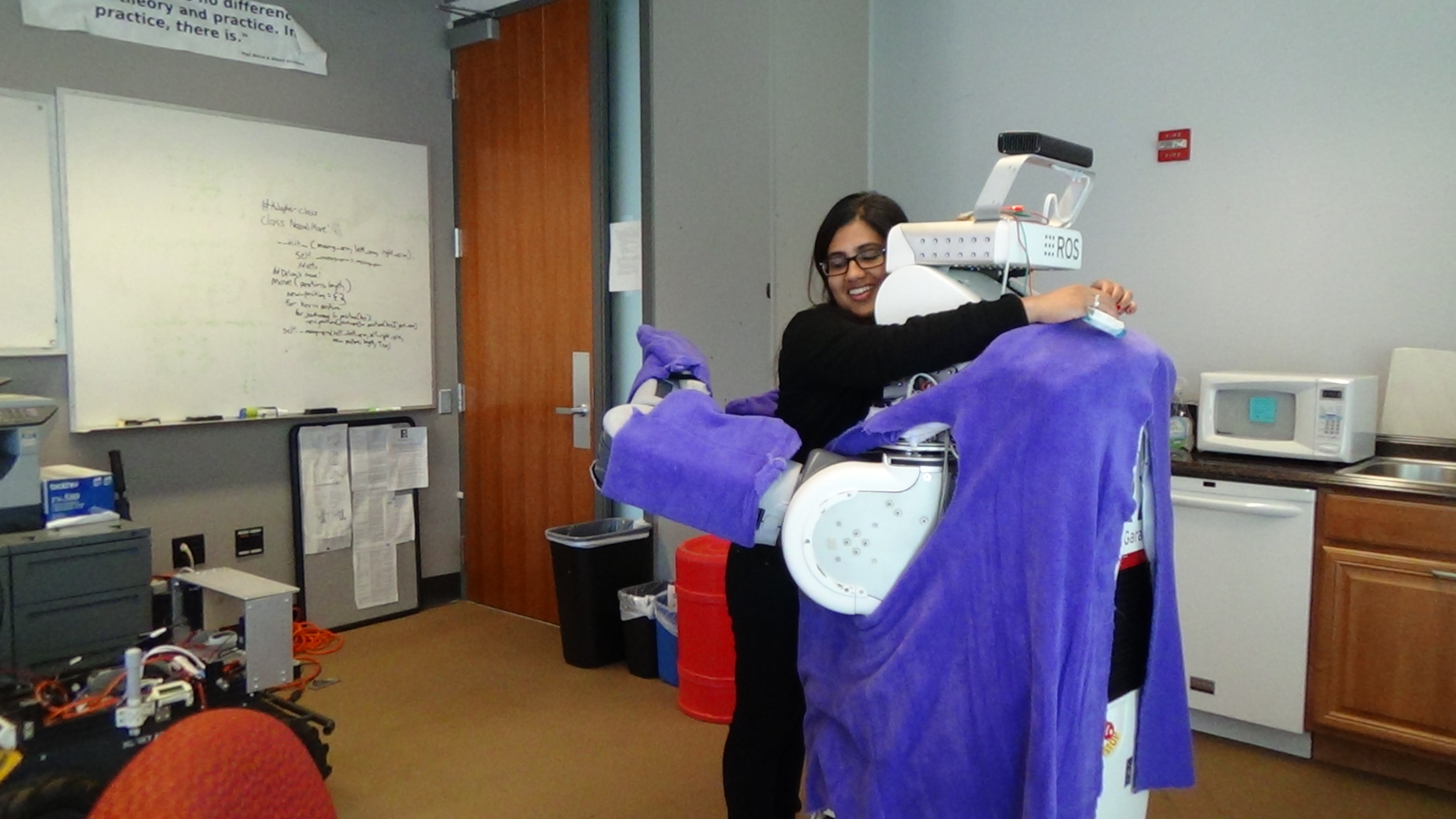
A participant hugging the PR2 with its custom Soft-Warm outfit during the experiment.
Hugs are one of the first forms of contact and affection that humans experience. Not only are hugs a common way to provide comfort, support, or affection, but they have also been shown to have significant health benefits. Hugs can lower blood pressure, increase oxytocin levels (the hormone that makes you happy), lower cortisol levels (the hormone that makes you stressed), and improve your immune system.
As roboticists who study human interaction, we are interested in creating robots that can hug humans as seamlessly as people hug each other. The purpose of this first HuggieBot project was to evaluate human responses to different physical characteristics and hugging behaviors exhibited by a hugging robot. Specifically, we aimed to test the hypothesis that a soft, warm, touch-sensitive PR2 humanoid robot can provide humans with satisfying hugs by matching both their hugging pressure and their hugging duration [ ].
After a brief introduction and opening survey, thirty relatively young participants with mostly technical backgrounds experienced and evaluated twelve hugs with the robot. Each person started the study with three randomly ordered trials that focused on physical robot characteristics, wherein the robot was Hard-Cold, Soft-Cold, or Soft-Warm. The study then proceeded to nine randomly ordered behavioral trials with all combinations of low, medium, and high hug pressure and low, medium, and high hug duration.
Analysis of the results showed that participants significantly preferred soft, warm hugs over hard, cold hugs [ ]. Furthermore, users preferred hugs that physically squeeze them and then release immediately, when they are ready for the hug to end. Taking part in the experiment also significantly increased positive user opinions of robots and robot use.
